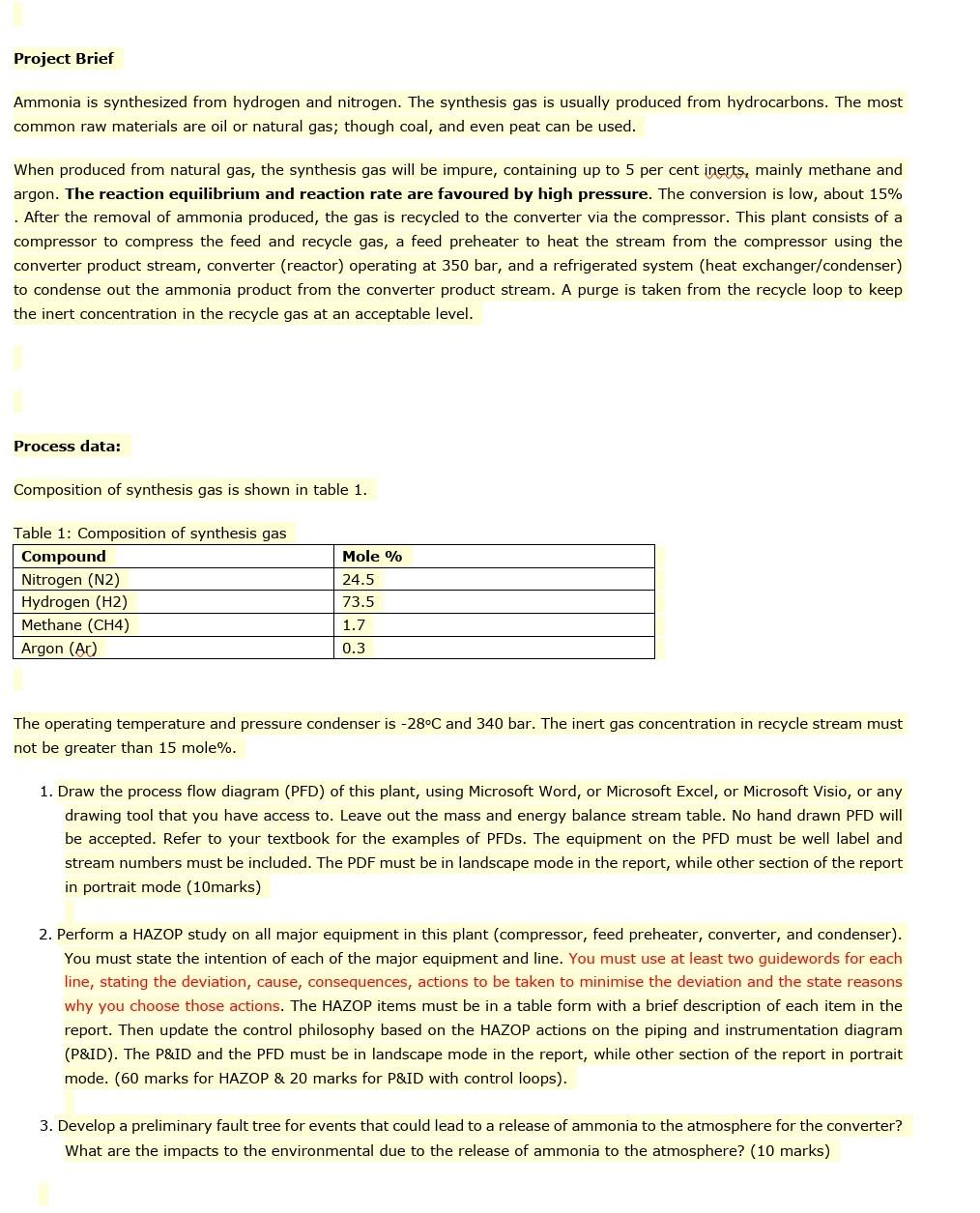Answered step by step
Verified Expert Solution
Question
1 Approved Answer
Need help with this project Project Brief Ammonia is synthesized from hydrogen and nitrogen. The synthesis gas is usually produced from hydrocarbons. The most common

Need help with this project
Project Brief Ammonia is synthesized from hydrogen and nitrogen. The synthesis gas is usually produced from hydrocarbons. The most common raw materials are oil or natural gas; though coal, and even peat can be used. When produced from natural gas, the synthesis gas will be impure, containing up to 5 per cent inerts, mainly methane and argon. The reaction equilibrium and reaction rate are favoured by high pressure. The conversion is low, about 15% . After the removal of ammonia produced, the gas is recycled to the converter via the compressor. This plant consists of a compressor to compress the feed and recycle gas, a feed preheater to heat the stream from the compressor using the converter product stream, converter (reactor) operating at 350 bar, and a refrigerated system (heat exchanger/condenser) to condense out the ammonia product from the converter product stream. A purge is taken from the recycle loop to keep the inert concentration in the recycle gas at an acceptable level. Process data: Composition of synthesis gas is shown in table 1. Table 1: Composition of synthesis gas Compound Nitrogen (N2) Hydrogen (H2) Methane (CH4) Argon (AC) Mole % 24.5 73.5 1.7 0.3 The operating temperature and pressure condenser is -28C and 340 bar. The inert gas concentration in recycle stream must not be greater than 15 mole%. 1. Draw the process flow diagram (PFD) of this plant, using Microsoft Word, or Microsoft Excel, or Microsoft Visio, or any drawing tool that you have access to. Leave out the mass and energy balance stream table. No hand drawn PFD will be accepted. Refer to your textbook for the examples of PFDs. The equipment on the PFD must be well label and stream numbers must be included. The PDF must be in landscape mode in the report, while other section of the report in portrait mode (10marks) 2. Perform a HAZOP study on all major equipment in this plant (compressor, feed preheater, converter, and condenser). You must state the intention of each of the major equipment and line. You must use at least two guidewords for each line, stating the deviation, cause, consequences, actions to be taken to minimise the deviation and the state reasons why you choose those actions. The HAZOP items must be in a table form with a brief description of each item in the report. Then update the control philosophy based on the HAZOP actions on the piping and instrumentation diagram (P&ID). The P&ID and the PFD must be in landscape mode in the report, while other section of the report in portrait mode. (60 marks for HAZOP & 20 marks for P&ID with control loops). 3. Develop a preliminary fault tree for events that could lead to a release of ammonia to the atmosphere for the converter? What are the impacts to the environmental due to the release of ammonia to the atmosphere? (10 marks)Step by Step Solution
There are 3 Steps involved in it
Step: 1

Get Instant Access to Expert-Tailored Solutions
See step-by-step solutions with expert insights and AI powered tools for academic success
Step: 2

Step: 3

Ace Your Homework with AI
Get the answers you need in no time with our AI-driven, step-by-step assistance
Get Started


